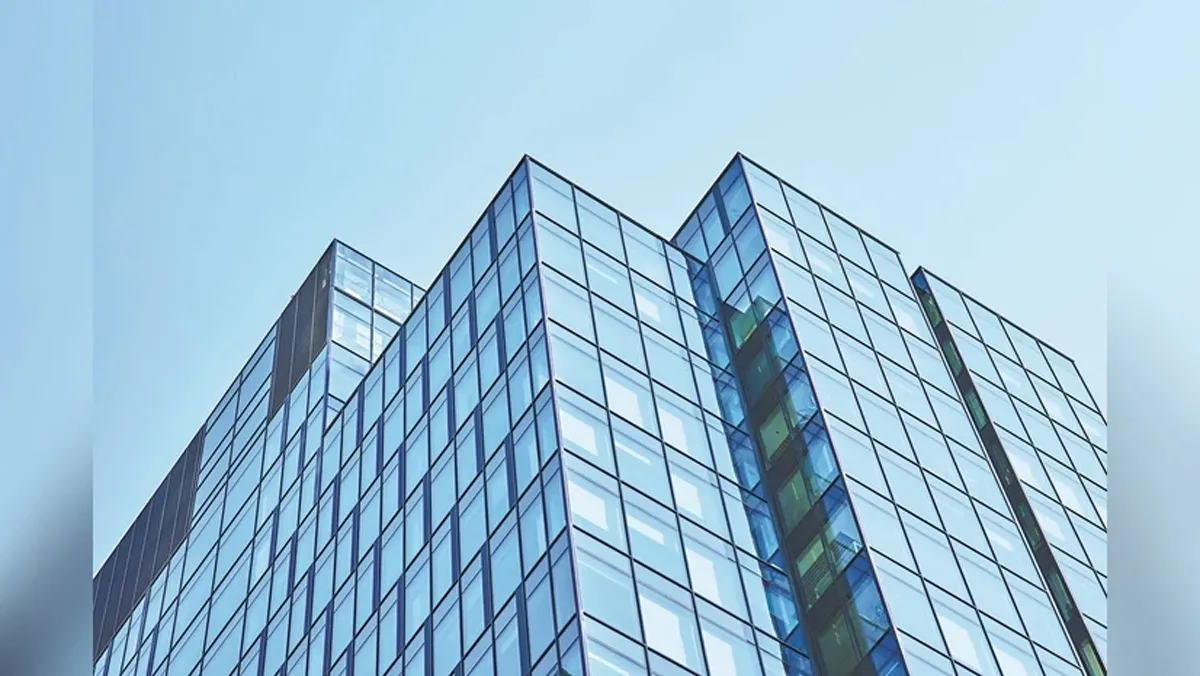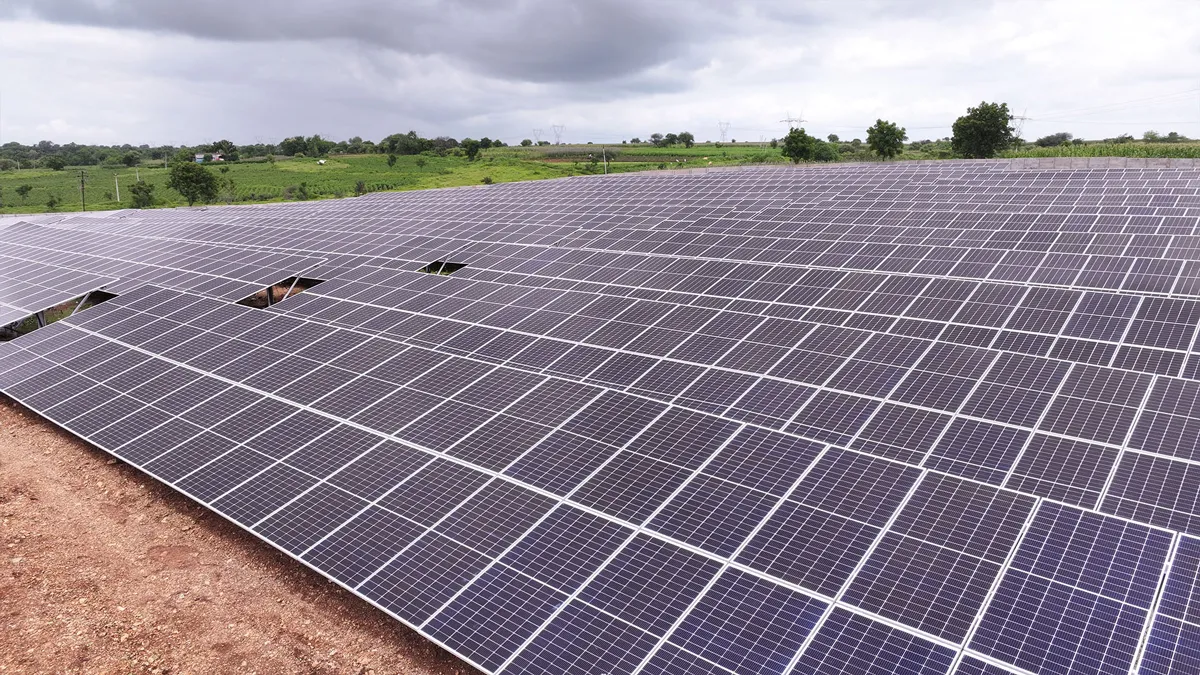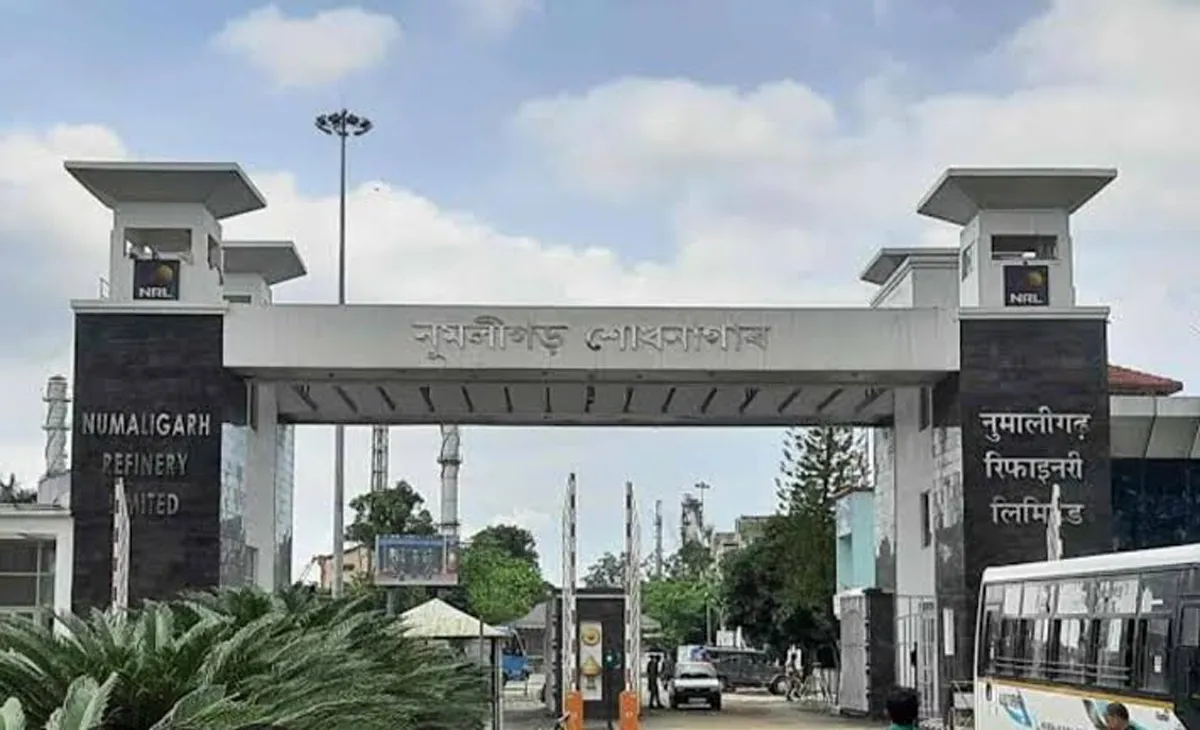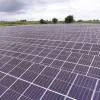- Home
- Real Estate
- Buildings with Brains
Buildings with Brains
As an attribute of a structure, intelligence enhances building productivity. But where does a building get its intelligence from, and at what cost? Charu Bahri has some answers.
In the past two decades, increasing concern over the energy consumption of large structures has spurred the creation of a class of intelligent buildings. Smart, because such buildings don't compromise on the quality of the inner environment and simultaneously ensure optimal service performance levels and are economical to maintain. Understandably, intelligent buildings are in greater demand. Smart commercial development projects are actually expected to result in higher market rentals and occupancy rates and tenant loyalty.
Intelligence sources
Where do buildings get their intelligence from? Basic building blocks per se have no intelligence. It is commonly assumed that electronic and digital gadgetry makes a smart building. But automation isn't the starting point for a structure's intelligence. As Vinod Gupta, Founder, Space Design Consultants, and the architect accredited for designing the country's first intelligent building, the CMC Ltd office building in Mumbai's Bandra-Kurla complex, explains, "Architects infuse intelligence into buildings, thereby enabling the structure to efficiently respond to the initial and changing demands of the owner and the occupier. Intelligent architecture works well with or without any automation."
Elucidating the features that make a building smart, Vidur Bharadwaj, Director, The 3C Company, says, "Passive architectural features such as building orientation, sun-shading, a central courtyard, the optimum use of natural light, and appropriate materials making up its enveloping elements such as the roof, exterior walls, fenestrations and floor are aspects of good design. Good design in turn makes buildings smart, that is, capable of responding to the external environment."
As for building automation, Bharadwaj sees it as a tool in the hands of architects, albeit a tool whose use should be minimised by placing greater reliance on design aspects. "Automation should not exist in isolation nor should it be the focal point
of the smartness of the built form," he adds. "Automation technology plays a key role, but is an enabler rather than
an end in itself. It must follow responsible architecture."
Gupta clearly differentiates between automation and intelligence, saying, "A building might be designed poorly but be extensively automated to stand out. But such a structure would draw higher energy loads than a well designed structure of the same size."
Balancing act
S Subbiah, Senior Architect, CR Narayana Rao (CRN), says "A buildings' intelligence is a blend of building design and technology, with each entity relying on the other." LEED-certified green buildings designed for long-term sustainability and minimal environmental impact share the goals and benefits of intelligent building design. According to Subbiah, "Every green building is an intelligent building in varying capacities."
Building automation technologies are based on electronic gadgetry; essentially, a wide range of controls and sensors working in tandem and connected by a wired or wireless network to a central control and monitoring room. Well-designed buildings use automation of building elements and systems to understand the needs of occupants and respond by providing an ambient indoor environment costing less to sustain. For instance, the 350,000 sq ft Forum Mall in Bengaluru is fitted with a computerised building management system that 'senses' where the maximum footfalls are leading and increases the cooling and ventilation in those areas. The sensors channel the information to the controllers of the HVAC systems, which respond accordingly. Sensors and controllers thus help optimise the consumption of energy by using networks to relay intelligent inputs detailing the attributes of the physical environment to building service systems. Alternatively, Venetian blinds may incorporate sensors to feed information about the intensity of light or direction of sunlight to a centralised computer that in turn commands the fixtures to open or close depending upon the inputs. Another feature of intelligent design is that it allows change in use. For instance, its cabling design could be structured to meet the needs of both initial and future occupants.
In this manner, automation can extend throughout the fabric of a structure and cover and integrate building elements and services such as lighting, parking, security and access control, fire alarm, fire-fighting, HVAC, voice and data communication, diesel generator, water supply, solar power, and solar water heating. By bringing these services on one platform, automation helps service engineers monitor and maintain service machinery and effectively reduce operating costs. According to Subbiah, "The 550,000 sq ft Ebene Cyber Tower One is managed by a small team of facilities management staff. This commercial property located in Ebene Cyber City, Mauritius, was awarded the Intelligent Building of the Year by the Intelligent Community Forum, USA in 2005. It uses an integrated building management system conceived and designed by CRN (the company also designed the entire building) and implemented by Race Technologies, a company based out of Chennai."
Intelligent buildings thus recognise that the true cost of the building encompasses its cost of construction as well as the operating and maintenance costs over its lifespan. "Automation yields significant energy savings, contributes to better functioning of the facility and adds value to the initial additional capital expenditure made towards providing 'intelligence' to the building," adds Subbiah.
Widening market
In the CMC building, Gupta in conjunction with the client developed a system for the control of window blinds that responded to sun angles interfaced with controls for artificial lighting. Since then technology has developed by leaps and bounds. Nowadays, newer building automation features and technologies are helping drive the concept of intelligent buildings. "The building automation market is growing in India, driven by the need for today's buildings to satisfy a wide range of economic, ecological, and social demands," says S Ramakrishna, CEO, Building Technologies Division, Siemens Ltd, India. "Enhanced energy efficiency [reduced costs and carbon footprint] is the most important ecological concern while the need to make buildings safer, secure and easier to use is a growing social demand."
Sameer Pradhan, Managing Director, CICC Automation Technologies Pvt Ltd, expects the building automation industry to see substantial growth in coming years, as long as spiralling real-estate prices and inflation don't dampen the growth story. "Unlike a decade ago, building automation systems are a part and parcel of every commercial building today, almost a statutory requirement for the benefits they deliver," he says. "Global warming is and will remain a top political, social, economic and environmental issue and drive the uptake of such systems. Still, demand for commercial real-estate development in India continues to be dependent on the Western world. So economic stability and growth in the US and Europe are of paramount importance even though domestic economic growth continues to be as robust as it has been over the past decade."
"Building automation solutions are driven by the need to remotely monitor and control mechanical and electrical (M&E) utilities in a centrally air-conditioned building; energy savings, due to part load operation of M&E equipment, optimisation of manpower to operate and maintain M&E utilities, diagnostics, preventative and predictive maintenance, and billing systems for HVAC and electrical systems," says A Skandha Prasad, Brand Manager - India, TREND Control Systems, Honeywell.
Tailor-made solutions
As the market for automation grows, suppliers are focusing on offering tailor-made solutions for specific scenarios. Describing how automation has a close association with the end-use of the structure, Ramakrishna, explains, "Siemens Total Building Solutions are based on the customer's required scenarios. Requirements can vary enormously, depending on the industry and infrastructure used. Simultaneously, solutions must be reliable and cost-effective investments in the long term. So, we use our expertise and integration knowhow to service these requirements and integrate components within different disciplines to create an overall solution that allows such scenarios to run smoothly. We also test suitable solution packages to ensure functionality and seamless interfaces. Siemens India recently automated the Leela Palace Hotel in New Delhi (integrated building management system)."
Speaking about the availability of automation systems, Gupta says, "In the past two decades, intelligent processes have become mainstream and pretty much standard. The availability in India is on par with other places in the world." Bharadwaj sees room for major improvement in the services of automation vendors in India. "There exists a dearth of expertise in implementing building management systems," he says. "Though the sensors and controllers are locally available, skilled talent to put it all together so that it works is in short supply."
Cutting-edge technologies
Subbiah counts newer lighting controls and management systems, sub-metering and tenant billing systems, under chassis scanner and parking management systems, and HR systems as a few useful technologies increasing the uptake for building intelligence. HR systems, for instance, help keep tabs on attendance data, entry and exit, provide levels of access through access control, personalised lighting and air-conditioning control.
Cutting-edge technologies are also allowing the building façade to respond to climate and weather conditions by changing its skin to balance outdoor and indoor conditions and conserve energy. Also, automated shading devices based on the position and intensity of solar rays are now finding increasing significance as a solution to maximise energy performance and enhance aesthetics. Further, electro-chromic glass is an energy-saving component for buildings that changes colour from clear to dark when a low-voltage electrical charge passing over a microscopically thin coating on the glass surface activates it.
An increasing number of vendors are now supplying products that will integrate into an intelligent system.
The design process
According to Subbiah, "Intelligent design starts from understanding the intent of the intelligence based on the use of the structure and the expected outcome. Subsequently, architects must work in close coordination with engineers to achieve the intent through building design, management and automation." The process comprising fundamental building design and detailed engineering also includes an energy modelling exercise to simulate and understand the performance of buildings based on conditions close to reality.
Understandably, costs weigh into the decision to design intelligence into a building. Although a lot depends on the clients' requirement and budget for capital expenditure, architects and developers must consider that the delta cost for making the building intelligent becomes less significant as the size of the project increases. So much so that Subbiah adds, "Often, the cost of providing basic intelligence for a building works out more economical than the cost associated with manning and managing large facilities."
Also, architects and developers alike must bear in mind that intelligence stemming from architectural design can only be built into a greenfield location. Brownfield sites can, at best, be infused with limited intelligence from automation.
Developers aware of the tangible benefits of smart buildings understand that intelligent buildings are the way to go. Now, it's time for everybody to catch on.
Case Study 1
Building: Green Boulevard, Noida
Floor area: Tower A (G+8), Tower B (G+7) and Tower C (G+5) together offer total lease-able space of about 700,000 sq ft. The building is a multi-tenant project based on the concept of creating a congenial campus-like environment, where every tenant shares common areas, facilities and still retains privacy. The stilted public realms on the lower floors are home to common areas: an amphitheatre, gym, cafeteria and shops. Two-level basement parking is spread over 200,000 sq ft more. The total developed space (super-built) measures 952,000 sq ft.
Developer: 3C Universal
Intelligence provided: Building management system (BMS)
Provider: Honeywell
Contractor to erect, install and commission the BMS: Systemtek
System details: First off, Green Boulevard's intelligence rightly stems from design features. The structure's north-south orientation minimises direct sunlight falling from the north while the horizontal projection cuts off the high sun from the south. All the exterior shading systems are designed to cut off heat and allow glare-free light in. Pre-cooled fresh air, the heat recovery wheel and free cooling during fair weather further help conserve energy. Also, the towers are designed around shaded landscape courts with water bodies and plants to reduce the ambient temperature and the building's depth has been optimised to capture daylight and maximise views. Put together, Green Boulevard's active and passive architectural features reduce its energy requirements by about 40 per cent vis-à-vis conventional office buildings in India. It has applied for USGBC (United States Green Building Council) Platinum-rating LEED (Leadership in Energy & Environmental Design) certification in Shell & Core.
Cost: The building automation system covers the common areas in about 1,200 I/O points at an approximate cost of Rs 12 per sq ft.
Case Study 2
Building: Four Gold-rated green buildings at MindSpace, a K Raheja Corp SEZ project (comprising 18 green buildings), coming up at Airoli in Navi Mumbai. K Raheja Corp clients include CapGemini, Syntel, WNS, e-Clerks, Accenture, etc.
Floor area: Each building admeasures about 500,000 sq ft
Developer: K Raheja Corp
Intelligence provided: Building management system (BMS)
Provider: CICC Automation Technologies Pvt Ltd.
System details: The building automation system integrates four to five air and water-cooled chillers, 30 to 40 air-handling units, tenant billing, heat recovery wheels, water management, sewage treatment plants, seamless integration with DG sets, UPS, elevators, lighting, etc.
Cost: About Rs 1.25 crore for the BMS
Case Study 3
Building: Ebene Cyber Tower One, Mauritius
Floor area: 550,000 sq ft
Architect: CR Narayana Rao
Intelligence provided: Integrated building management system
Provider: Race Technologies
System details: Comprehensive integration of all utilities, including HVAC automation and scheduling as per client's requirement; integration of ventilation and exhaust system to fire and other systems; energy metering system for accurate tenant billing for power consumed by various elements like UPS, lighting, air-conditioning.; integration of fire alarm system, fire-fighting and public address systems; comprehensive access control system, with integration with CCTVs and surveillance; safety, security integration with on site and remote monitoring; turnstile barriers to regulate access in secure areas; central telecom network/backbone planned with redundancy for every office making the building flexible for any kind of data and tele requirements; electrical systems monitoring and metering systems; lighting management system; comprehensive water management system with automation of pumps; EPABX system within the building that can make free calls between offices, tenants, and any other amenity space; vertical transportation system monitoring; emergency voice communication system for evacuation. This building also has the facility to be operated, monitored and controlled remotely but the client has chosen not to exercise this feature.
Case Study 4
Building: Forum Mall, Bengaluru
Floor area: 350,000 sq ft plus 300,000 sq ft of parking
Developer: Prestige Group
Intelligence provided: Trend building management system (BMS)
Provider: Trend Control Systems, Honeywell
System details: Complete automation of HVAC system, water management, lighting control and emergency evacuation through Trend's Ethernet-based fully integrated building management controls. Four chillers (each is 350 tr) and 130 AHUs are integrated through the Trend BMS. The BMS has 1,500 I/O points feeding data to 25 networked DDC Controllers connected to a central computer. Microcomputer controllers that are part of the central terminal use the field devices and their programmed operating parameters to take action to control plant equipment. The BMS also integrates with the electronic Tenant Billing System through 34 BTU meters and 270 energy meters so that tenants are billed on the actual consumption of power as measured through multi-data meters installed in their respective outgoing feeders. Power costs for common area and common utilities are shared commensurate with respective tenant plinth areas. Trend controllers also monitor the multi-storey car park, control 18 ventilation fans, and monitor the status of the generator room, STP room, 16 toilet ventilation fans, staircase pressurisation and 14 kitchen exhaust fans.
Cost benefit: Trend BMS has improved the operational efficiency of the entire system and helped lower energy consumed by 8 to 10 per cent.
Quick Bytes
• A buildings' intelligence is a blend of its design and technology.
• Well-designed buildings use automation to understand the needs of occupants.
• Newer features and technologies are driving the concept of intelligent buildings.
• Automation suppliers are focusing on offering tailormade solutions for specific scenarios.
• Automation contributes to better functioning of the facility.
To share your views on intelligent buildings, write in at feedback@ASAPPmedia.com
As an attribute of a structure, intelligence enhances building productivity. But where does a building get its intelligence from, and at what cost? Charu Bahri has some answers. In the past two decades, increasing concern over the energy consumption of large structures has spurred the creation of a class of intelligent buildings. Smart, because such buildings don't compromise on the quality of the inner environment and simultaneously ensure optimal service performance levels and are economical to maintain. Understandably, intelligent buildings are in greater demand. Smart commercial development projects are actually expected to result in higher market rentals and occupancy rates and tenant loyalty. Intelligence sources Where do buildings get their intelligence from? Basic building blocks per se have no intelligence. It is commonly assumed that electronic and digital gadgetry makes a smart building. But automation isn't the starting point for a structure's intelligence. As Vinod Gupta, Founder, Space Design Consultants, and the architect accredited for designing the country's first intelligent building, the CMC Ltd office building in Mumbai's Bandra-Kurla complex, explains, Architects infuse intelligence into buildings, thereby enabling the structure to efficiently respond to the initial and changing demands of the owner and the occupier. Intelligent architecture works well with or without any automation. Elucidating the features that make a building smart, Vidur Bharadwaj, Director, The 3C Company, says, Passive architectural features such as building orientation, sun-shading, a central courtyard, the optimum use of natural light, and appropriate materials making up its enveloping elements such as the roof, exterior walls, fenestrations and floor are aspects of good design. Good design in turn makes buildings smart, that is, capable of responding to the external environment. As for building automation, Bharadwaj sees it as a tool in the hands of architects, albeit a tool whose use should be minimised by placing greater reliance on design aspects. Automation should not exist in isolation nor should it be the focal point of the smartness of the built form, he adds. Automation technology plays a key role, but is an enabler rather than an end in itself. It must follow responsible architecture. Gupta clearly differentiates between automation and intelligence, saying, A building might be designed poorly but be extensively automated to stand out. But such a structure would draw higher energy loads than a well designed structure of the same size. Balancing act S Subbiah, Senior Architect, CR Narayana Rao (CRN), says A buildings' intelligence is a blend of building design and technology, with each entity relying on the other. LEED-certified green buildings designed for long-term sustainability and minimal environmental impact share the goals and benefits of intelligent building design. According to Subbiah, Every green building is an intelligent building in varying capacities. Building automation technologies are based on electronic gadgetry; essentially, a wide range of controls and sensors working in tandem and connected by a wired or wireless network to a central control and monitoring room. Well-designed buildings use automation of building elements and systems to understand the needs of occupants and respond by providing an ambient indoor environment costing less to sustain. For instance, the 350,000 sq ft Forum Mall in Bengaluru is fitted with a computerised building management system that 'senses' where the maximum footfalls are leading and increases the cooling and ventilation in those areas. The sensors channel the information to the controllers of the HVAC systems, which respond accordingly. Sensors and controllers thus help optimise the consumption of energy by using networks to relay intelligent inputs detailing the attributes of the physical environment to building service systems. Alternatively, Venetian blinds may incorporate sensors to feed information about the intensity of light or direction of sunlight to a centralised computer that in turn commands the fixtures to open or close depending upon the inputs. Another feature of intelligent design is that it allows change in use. For instance, its cabling design could be structured to meet the needs of both initial and future occupants. In this manner, automation can extend throughout the fabric of a structure and cover and integrate building elements and services such as lighting, parking, security and access control, fire alarm, fire-fighting, HVAC, voice and data communication, diesel generator, water supply, solar power, and solar water heating. By bringing these services on one platform, automation helps service engineers monitor and maintain service machinery and effectively reduce operating costs. According to Subbiah, The 550,000 sq ft Ebene Cyber Tower One is managed by a small team of facilities management staff. This commercial property located in Ebene Cyber City, Mauritius, was awarded the Intelligent Building of the Year by the Intelligent Community Forum, USA in 2005. It uses an integrated building management system conceived and designed by CRN (the company also designed the entire building) and implemented by Race Technologies, a company based out of Chennai. Intelligent buildings thus recognise that the true cost of the building encompasses its cost of construction as well as the operating and maintenance costs over its lifespan. Automation yields significant energy savings, contributes to better functioning of the facility and adds value to the initial additional capital expenditure made towards providing 'intelligence' to the building, adds Subbiah. Widening market In the CMC building, Gupta in conjunction with the client developed a system for the control of window blinds that responded to sun angles interfaced with controls for artificial lighting. Since then technology has developed by leaps and bounds. Nowadays, newer building automation features and technologies are helping drive the concept of intelligent buildings. The building automation market is growing in India, driven by the need for today's buildings to satisfy a wide range of economic, ecological, and social demands, says S Ramakrishna, CEO, Building Technologies Division, Siemens Ltd, India. Enhanced energy efficiency [reduced costs and carbon footprint] is the most important ecological concern while the need to make buildings safer, secure and easier to use is a growing social demand. Sameer Pradhan, Managing Director, CICC Automation Technologies Pvt Ltd, expects the building automation industry to see substantial growth in coming years, as long as spiralling real-estate prices and inflation don't dampen the growth story. Unlike a decade ago, building automation systems are a part and parcel of every commercial building today, almost a statutory requirement for the benefits they deliver, he says. Global warming is and will remain a top political, social, economic and environmental issue and drive the uptake of such systems. Still, demand for commercial real-estate development in India continues to be dependent on the Western world. So economic stability and growth in the US and Europe are of paramount importance even though domestic economic growth continues to be as robust as it has been over the past decade. Building automation solutions are driven by the need to remotely monitor and control mechanical and electrical (M&E) utilities in a centrally air-conditioned building; energy savings, due to part load operation of M&E equipment, optimisation of manpower to operate and maintain M&E utilities, diagnostics, preventative and predictive maintenance, and billing systems for HVAC and electrical systems, says A Skandha Prasad, Brand Manager - India, TREND Control Systems, Honeywell. Tailor-made solutions As the market for automation grows, suppliers are focusing on offering tailor-made solutions for specific scenarios. Describing how automation has a close association with the end-use of the structure, Ramakrishna, explains, Siemens Total Building Solutions are based on the customer's required scenarios. Requirements can vary enormously, depending on the industry and infrastructure used. Simultaneously, solutions must be reliable and cost-effective investments in the long term. So, we use our expertise and integration knowhow to service these requirements and integrate components within different disciplines to create an overall solution that allows such scenarios to run smoothly. We also test suitable solution packages to ensure functionality and seamless interfaces. Siemens India recently automated the Leela Palace Hotel in New Delhi (integrated building management system). Speaking about the availability of automation systems, Gupta says, In the past two decades, intelligent processes have become mainstream and pretty much standard. The availability in India is on par with other places in the world. Bharadwaj sees room for major improvement in the services of automation vendors in India. There exists a dearth of expertise in implementing building management systems, he says. Though the sensors and controllers are locally available, skilled talent to put it all together so that it works is in short supply. Cutting-edge technologies Subbiah counts newer lighting controls and management systems, sub-metering and tenant billing systems, under chassis scanner and parking management systems, and HR systems as a few useful technologies increasing the uptake for building intelligence. HR systems, for instance, help keep tabs on attendance data, entry and exit, provide levels of access through access control, personalised lighting and air-conditioning control. Cutting-edge technologies are also allowing the building façade to respond to climate and weather conditions by changing its skin to balance outdoor and indoor conditions and conserve energy. Also, automated shading devices based on the position and intensity of solar rays are now finding increasing significance as a solution to maximise energy performance and enhance aesthetics. Further, electro-chromic glass is an energy-saving component for buildings that changes colour from clear to dark when a low-voltage electrical charge passing over a microscopically thin coating on the glass surface activates it. An increasing number of vendors are now supplying products that will integrate into an intelligent system. The design process According to Subbiah, Intelligent design starts from understanding the intent of the intelligence based on the use of the structure and the expected outcome. Subsequently, architects must work in close coordination with engineers to achieve the intent through building design, management and automation. The process comprising fundamental building design and detailed engineering also includes an energy modelling exercise to simulate and understand the performance of buildings based on conditions close to reality. Understandably, costs weigh into the decision to design intelligence into a building. Although a lot depends on the clients' requirement and budget for capital expenditure, architects and developers must consider that the delta cost for making the building intelligent becomes less significant as the size of the project increases. So much so that Subbiah adds, Often, the cost of providing basic intelligence for a building works out more economical than the cost associated with manning and managing large facilities. Also, architects and developers alike must bear in mind that intelligence stemming from architectural design can only be built into a greenfield location. Brownfield sites can, at best, be infused with limited intelligence from automation. Developers aware of the tangible benefits of smart buildings understand that intelligent buildings are the way to go. Now, it's time for everybody to catch on. Case Study 1 Building: Green Boulevard, Noida Floor area: Tower A (G+8), Tower B (G+7) and Tower C (G+5) together offer total lease-able space of about 700,000 sq ft. The building is a multi-tenant project based on the concept of creating a congenial campus-like environment, where every tenant shares common areas, facilities and still retains privacy. The stilted public realms on the lower floors are home to common areas: an amphitheatre, gym, cafeteria and shops. Two-level basement parking is spread over 200,000 sq ft more. The total developed space (super-built) measures 952,000 sq ft.Developer: 3C UniversalIntelligence provided: Building management system (BMS)Provider: HoneywellContractor to erect, install and commission the BMS: SystemtekSystem details: First off, Green Boulevard's intelligence rightly stems from design features. The structure's north-south orientation minimises direct sunlight falling from the north while the horizontal projection cuts off the high sun from the south. All the exterior shading systems are designed to cut off heat and allow glare-free light in. Pre-cooled fresh air, the heat recovery wheel and free cooling during fair weather further help conserve energy. Also, the towers are designed around shaded landscape courts with water bodies and plants to reduce the ambient temperature and the building's depth has been optimised to capture daylight and maximise views. Put together, Green Boulevard's active and passive architectural features reduce its energy requirements by about 40 per cent vis-à-vis conventional office buildings in India. It has applied for USGBC (United States Green Building Council) Platinum-rating LEED (Leadership in Energy & Environmental Design) certification in Shell & Core. Cost: The building automation system covers the common areas in about 1,200 I/O points at an approximate cost of Rs 12 per sq ft. Case Study 2 Building: Four Gold-rated green buildings at MindSpace, a K Raheja Corp SEZ project (comprising 18 green buildings), coming up at Airoli in Navi Mumbai. K Raheja Corp clients include CapGemini, Syntel, WNS, e-Clerks, Accenture, etc.Floor area: Each building admeasures about 500,000 sq ftDeveloper: K Raheja CorpIntelligence provided: Building management system (BMS)Provider: CICC Automation Technologies Pvt Ltd.System details: The building automation system integrates four to five air and water-cooled chillers, 30 to 40 air-handling units, tenant billing, heat recovery wheels, water management, sewage treatment plants, seamless integration with DG sets, UPS, elevators, lighting, etc.Cost: About Rs 1.25 crore for the BMS Case Study 3 Building: Ebene Cyber Tower One, Mauritius Floor area: 550,000 sq ft Architect: CR Narayana RaoIntelligence provided: Integrated building management systemProvider: Race TechnologiesSystem details: Comprehensive integration of all utilities, including HVAC automation and scheduling as per client's requirement; integration of ventilation and exhaust system to fire and other systems; energy metering system for accurate tenant billing for power consumed by various elements like UPS, lighting, air-conditioning.; integration of fire alarm system, fire-fighting and public address systems; comprehensive access control system, with integration with CCTVs and surveillance; safety, security integration with on site and remote monitoring; turnstile barriers to regulate access in secure areas; central telecom network/backbone planned with redundancy for every office making the building flexible for any kind of data and tele requirements; electrical systems monitoring and metering systems; lighting management system; comprehensive water management system with automation of pumps; EPABX system within the building that can make free calls between offices, tenants, and any other amenity space; vertical transportation system monitoring; emergency voice communication system for evacuation. This building also has the facility to be operated, monitored and controlled remotely but the client has chosen not to exercise this feature. Case Study 4 Building: Forum Mall, BengaluruFloor area: 350,000 sq ft plus 300,000 sq ft of parkingDeveloper: Prestige GroupIntelligence provided: Trend building management system (BMS)Provider: Trend Control Systems, HoneywellSystem details: Complete automation of HVAC system, water management, lighting control and emergency evacuation through Trend's Ethernet-based fully integrated building management controls. Four chillers (each is 350 tr) and 130 AHUs are integrated through the Trend BMS. The BMS has 1,500 I/O points feeding data to 25 networked DDC Controllers connected to a central computer. Microcomputer controllers that are part of the central terminal use the field devices and their programmed operating parameters to take action to control plant equipment. The BMS also integrates with the electronic Tenant Billing System through 34 BTU meters and 270 energy meters so that tenants are billed on the actual consumption of power as measured through multi-data meters installed in their respective outgoing feeders. Power costs for common area and common utilities are shared commensurate with respective tenant plinth areas. Trend controllers also monitor the multi-storey car park, control 18 ventilation fans, and monitor the status of the generator room, STP room, 16 toilet ventilation fans, staircase pressurisation and 14 kitchen exhaust fans. Cost benefit: Trend BMS has improved the operational efficiency of the entire system and helped lower energy consumed by 8 to 10 per cent. Quick Bytes • A buildings' intelligence is a blend of its design and technology.• Well-designed buildings use automation to understand the needs of occupants.• Newer features and technologies are driving the concept of intelligent buildings.• Automation suppliers are focusing on offering tailormade solutions for specific scenarios.• Automation contributes to better functioning of the facility. To share your views on intelligent buildings, write in at feedback@ASAPPmedia.com

Indian REITs Offer 6-7.5 per cent Yield, Surpassing Many Global Markets
Indian Real Estate Investment Trusts (REITs) are delivering average yields of 6–7.5 per cent for unitholders, outperforming many mature markets, including the US, according to a report by Credai and Anarock.Credai, the apex body of Indian real estate developers, and property consultant Anarock released the report Indian REITs – A Gateway to Institutional Real Estate at an event in India.Currently, India has five listed REITs – Brookfield India Real Estate Trust, Embassy Office Parks REIT, Mindspace Business Parks REIT, Nexus Select Trust, and Knowledge Realty Trust. Nexus Select Trust pr..

Insolation Energy Wins 226 MW Solar Projects Under PM-KUSUM
Insolation Energy on Monday announced securing multiple solar projects totalling 226.45 MW, with an investment of Rs 7.5 billion, under the PM-KUSUM scheme. The orders were awarded to its wholly-owned subsidiary, Insolation Green Energy Pvt Ltd, by Jaipur Vidyut Vitran Nigam Limited for 20 sites and Ajmer Vidyut Vitran Nigam Limited for 115 sites, the company informed the exchanges.“The combined SPV solar power plants will total 226.45 MW under PM-KUSUM Component A, with the final levelised tariff at Rs 3.04 per unit for 16 sites, Rs 2.82 per unit for 5 sites, Rs 2.75 per unit for 53 sites, ..

Numaligarh Refinery Awards EPC Contract for Rooftop Solar Projects
State-owned Numaligarh Refinery Ltd. (NRL) has awarded a Letter of Award to Solarium Green Energy Ltd. for the rate contract covering the Engineering, Procurement, and Construction (EPC) of grid-connected rooftop solar PV projects at various locations. The projects fall within the categories of 51–200 kW and 201–1000 kW. Notable projects include a 140 kW rooftop solar plant at NRL Assam, a 760 kW plant at NRL Assam, and a 280 kW plant at NRL West Bengal.The supply order covers ex-manufacturing works and the dispatch price for plant and equipment for the 140 kW, 760 kW, and 280 kW rooftop s..
Latest Updates
Recommended for you
Advertisement
Subscribe to Our Newsletter
Get daily newsletters around different themes from Construction world.
Advertisement
subscribe to the newsletter
Don't miss out on valuable insights and opportunities
to connect with like minded professionals
















